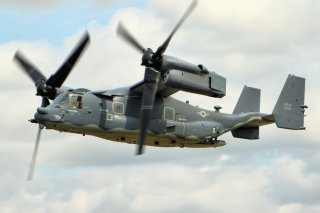The American and British Armies Are Pairing Up on Future Rotorcraft
The American and British armies embody the countries’ special relationship.
Representatives of the United States Army and the British Army signed a Future Vertical Lift Cooperative Program Feasibility Assessment, a document that ensures the two countries’ future rotorcraft will be interoperable in the future.
The U.S. Army release outlining the agreement explains that “the two nations will share information about their future rotorcraft requirements and programs.”
“They will also explore and analyze new concepts for the employment of coalition air power in the lower-tier air domain, the air space where Army aviation typically operates. Through this joint analysis, the U.S. and U.K. will be able to assess the benefits, risks and overall feasibility of rotorcraft cooperation between the two allies.”
The ultimate goal of this agreement is to “reduce the divergence between the two countries’ open-system architectures, a key component to keeping pace with emerging technology and rapid adaptability and capability evolution.”
“As you would expect, the British Army has an extremely close and productive relationship with the U.S. Army,” British major-general James Bowder explained. “Together we are stronger. Our deep science and technology collaboration is an important element of this and makes us both more competitive. Today’s agreement formalizes our cooperation to help determine the future direction of aviation in competition and conflict.”
U.S. Department of Defense FVL Program
The U.S. Future Vertical Lift program is one of the most significant rotorcraft projects in the last several decades. Following the success of the V-22 Osprey tiltrotor aircraft, the Department of Defense would like to replace many of its legacy helicopters with tiltrotor alternatives.
The advantages of a tiltrotor aircraft over a helicopter are striking. Tiltrotor aircraft combine the hover and agility of a helicopter with the high speed and range of a turboprop aircraft. As a result, they offer significantly higher top speeds and dramatic range increases over legacy aircraft.
Although the first widely-used tiltrotor in the United States military, Bell’s V-22 Osprey, is widely considered a success, one of the aircraft’s disadvantages is the considerable downwash created when hovering.
When transitioning from horizontal flight to hover, the V-22’s entire engine and turboprop blade assembly adjust to the vertical position, blowing a great deal of air downward and kicking up dust, dirt, and other debris.
Future tiltrotor designs address this issue by rotating only the blade assembly to the vertical position, reducing downwash and the amount of airborne debris.
The British-American special relationship covers a wide range of political, foreign policy, and military aspects. Though tiltrotor aircraft are perhaps not the most dramatic example of the two country’s special ties, considering the recent events in Europe, they affirm the relationship at a critical time.
Caleb Larson is a multimedia journalist and defense writer with the National Interest. A graduate of UCLA, he also holds a Master of Public Policy and lives in Berlin. He covers the intersection of conflict, security, and technology, focusing on American foreign policy, European security, and German society for both print and radio. Follow him on Twitter @calebmlarson

